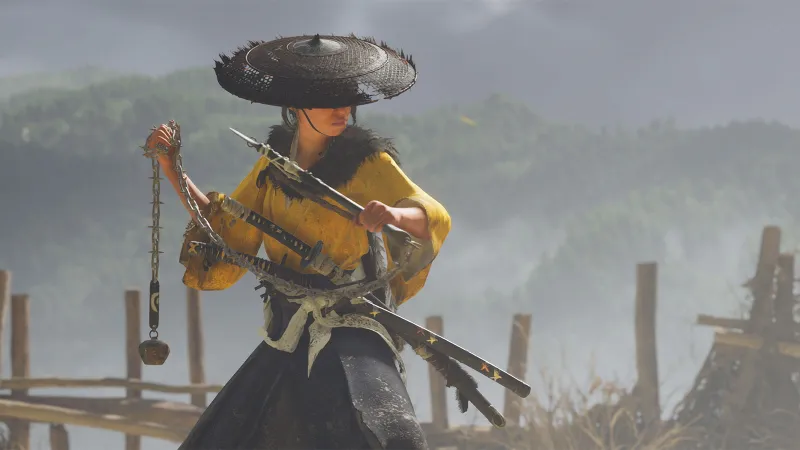
Sucker Punch’s impressive follow-up to Ghost of Tsushima has been in players’ hands for about two weeks. Many have had the opportunity to see the narrative to its conclusion (ourselves included), so we caught up with the game’s co-director, Jason Connell, and lead writer, Ian Miles, to talk about the game’s most interesting story elements, Easter Eggs, and inquire about what might be next for Atsu.
Warning: the discussion below covers the entirety of Ghost of Yōtei’s story, including its ending. Do not read if you have not finished the game!
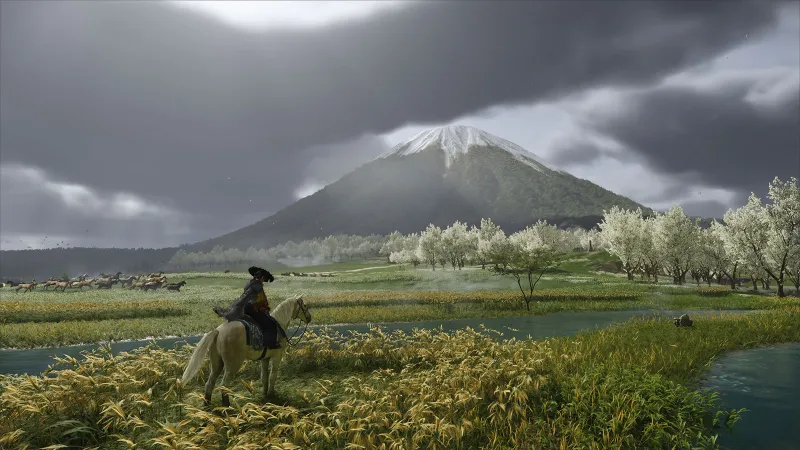
Game Informer: Let’s jump right into spoilers. The scene with Atsu playing music with Oyuki is, for me, the most affecting scene in the game. It really made me cry. Can you tell me how that sequence came together and its goals?
Ian Ryan: Going into that whole storyline, we really wanted to talk about and create a story where Atsu was forced to get to know a member of the Six, because typically she just wants to cut them down as quickly as possible. But we really wanted to force her to step out of her skin to see the world through, in this case, Oyuki’s eyes. And also just relate to somebody on those terms and to see that other people are also victims of Lord Saito in different ways than Atsu was, even though Oyuki was complicit in the night her family was killed.
So, that was the goal of that entire piece. And it really culminates in that moment when Atsu realizes who Oyuki is. And then they have the moment of training and the clash and so much of it was really we wanted to just challenge Atsu and see how far could we push her and honor her anger and her sense of betrayal. She was lied to. But we also really just wanted to explore how does she react and why? At what point will she show some mercy? And even then, we wanted to show she is willing and open to forgiveness. But maybe not fully 100% forgiving Oyuki even in this moment, but recognize that she’s been through some similar pain and that she tried to help her as a child and allow Atsu to, in a way, heal a little bit and not just always reach for her sword and cross a name off her list in the name of death. In this case there was the act of mercy that got her there. So really, it was all about Atsu’s journey and exploring that in a different way than we did elsewhere.
Atsu’s brother, Jubei, being alive was a surprise. Did you think of that reveal as a twist? How important was he to Atsu’s broader journey and was it important for players to meet him early?
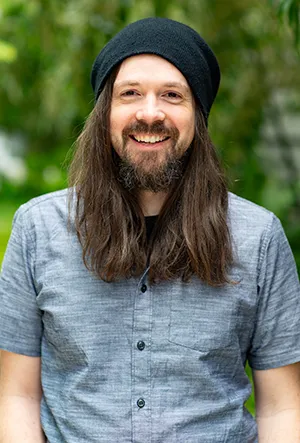
Ghost of Yōtei co-director Jason Connell
Jason Connell: Well, I should say, first of all, the, the type of game that we built, depending on where you go, that reveal can either be pretty fast, and in some cases, can be really, really slow.
It could be quite a bit into your journey, whether you play wide or maybe you do the Kitsune story sequence first. But there is some intention to move things along if you’re a [golden path] player, if you like to play the story of the game.
Noshir [Dalal] does an amazing job in that role. Their relationship is very… you can feel it. Being able to show that relationship as early as possible, especially if you decided to go that way, is worthwhile, right? Because we like the way they play out together. So, there’s some intention from us to try to get that to you early, if that’s the area that you chose to go. Because the rest of that entire Ishikari Plain valley, that space that you go into, is this story of them reconnecting and, some of the struggles that come with the lives that they’ve led independently. We wanted to get the meaning of them together at the forefront of that experience so we could kind of go into depth of how far they’ve changed and take you on a couple turns throughout Ishikari Plain.
Is there anything you did to push players toward discovering his story first?
Jason Connell: Well, there might be some little stuff under the engine that has some guidance about which ones we throw out first for you. I can’t recall that exact list, but I will tell you that, the number one reason that we found is just geographically, it is a bit closer. The Kitsune is pretty far up to the north. If you want to do the Kitsune story first, then you really want you want to see some snow and some ninjas because it is up there and you’re going on a big journey. And I love it that people do it, but it is a trek and in a lot of cases, if you see two icons and they both seem kind of cool, if this one’s a little closer, you might go to that one.
But we like we like that number one, there’s the freedom, but two, that the people that choose the Oni first with that relationship with Jubei? If we if we were to force some linearity, that’s probably the one. Getting that relationship going so you understand it and leaving Oyuki and that turn of events and that relationship, that’s quite different than the one with Jubei. I think that would be second. But we like that you can choose. We like that, and we’ve designed it that way. But just by the fact that it’s closer, I do think that you’re going to possibly see people head that way a little bit more.
Jubei having daughter, Kiku, was also surprising. But you didn’t spend much time on Kiku’s mother. What was behind that decision?
Ian Miles: We touch on it briefly when Atsu finally has a moment of downtime with her wolf pack with Jubei and Oyuki and Kiku in Oshima coast. I believe that’s where it is. They speak about what happened to her mother and, essentially, her mother died in childbirth. So, Jubei had a very young dalliance with someone in his rise from peasant on the frontier into the life of the samurai, and it blessed him with Kiku, but, all of a sudden, he had to live with, what does this mean to be an extremely young father that he wasn’t prepared to be without a wife and a mother for his child?
It was one of those choices, as well, that we’re constantly asking ourselves. How can we depict certain characters and bring them into the story? This was one where, because we had so many characters we were telling the stories of, we focused on the ones in front of us. So, Kiku’s mother did not make it into this one, but her absence is felt, essentially. And then that plays also into the role that Atsu begins to play in her life.
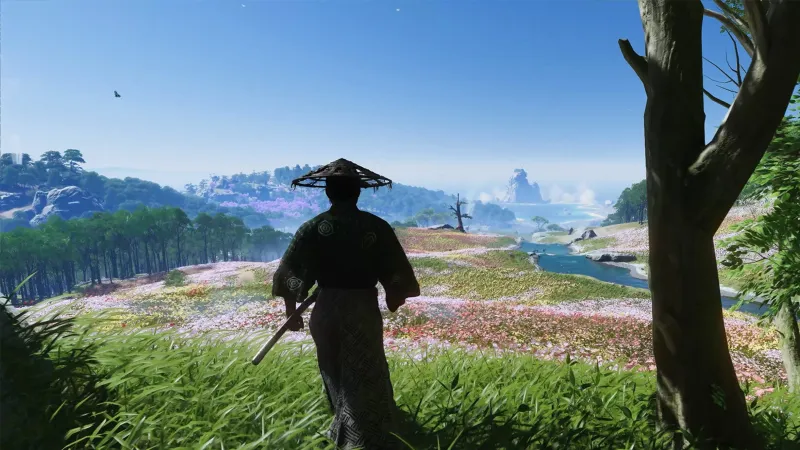
Ghost of Tsushima
I like Ghost of Tsushima protagonist, Jin Sakai, but I have to say… I like Atsu a lot more. Can you explain your intentions with her as a character and how you made her so endearing?
Ian Miles: I think one of the early goals was we wanted to create an outsider character who players could really relate to, and also to just tell a really personal story and focus on that. There’s the huge backdrop of these factions, the Matsumae samurai, and Lord Saito and his clan and that conflict slowly brewing, but we really wanted to focus first and foremost on Atsu in this tale of revenge and how she’s trying to heal herself and that wounded heart she has as she’s trying to cross the names off the list and get revenge. We just ultimately wanted to focus on that. And then a lot of it also came out of working with Erika Ishii, who just did a great job embodying the character and bringing her to life.
We worked with her, in the recording and in shooting scenes, and doing a lot of writing work shopping of the character to make sure that we were representing the classic [archetypes] from American westerns, but also from spaghetti westerns, to Mifune from Yojimbo – that wandering warrior archetype who can stroll into a town, who is a mercenary, but also someone who has the deep heart, the compassion, who can recognize who is another victim or someone who’s been through hell and back, and who might want to help them.
So we were constantly trying to explore that. That tension and striking that.
How was Erika Ishii cast and how much influence did they have over the character? Is there room for improvisation when you’re performing for a video game character?
Jason Connell: Yes, in a lot of ways. Like Ian just mentioned, writing, work shopping, and there was workshops with Erika to try to help find the character. I think that’s an important part of the journey. You kind of have this idea from the very beginning. Before Ian even writes anything, maybe just [co-director] Nate [Fox] and I, we have this idea for this type of character and that gets a little bit more refined and exciting when Ian goes and writes something.
And then we go through a casting process, and we were looking for somebody that could obviously depict the character that you’ve written, but also maybe has something else interesting that you weren’t even thinking of, or that shows some of their flaws and they wear it outwardly. And then you’re like, “Oh, man. This is somebody that we think could bring something interesting to this character.” That is something we could write around. There’s a softness to it, even though we’re making a wandering samurai archetype type of character, like Ian said. But seeing somebody that can show passion or comfort in a scene where maybe you didn’t specifically write it in there, but they showcased that.
To us, that’s sort of the stuff that gets us excited. I will say that once we narrowed in on Atsu, I think we were pretty hopeful it would work out because we were all very excited about it. And then you go through a couple other stages of auditions, but once they’re cast, I don’t think that’s like, “Okay, you know… just go shoot Atsu.” There’s half a year to a year of just figuring out the relationship of Erika to Atsu and they’re going to bring a lot of their own personality, a lot of their own choices. And it kind of evolves, and it’s this beautiful, creative thing that you’re making together. And I think Ian and the writing team and Nate [Fox], obviously he’s stage director on all of our games, did a really good job bringing such great characters out of not just Erika, but all of them. They brought their best.
Ian Miles: And Nate [Fox] is a big fan of improv in general, and he really likes to bring that kind of electricity into the scenes he directs, and he would always give actors one final take after we got everything in the can and got what we needed. He would give them one just for their own to try some things out. And so often that was the take we would use. And something really interesting would come out of that, that we would then take, and it would inform the creative process from there.
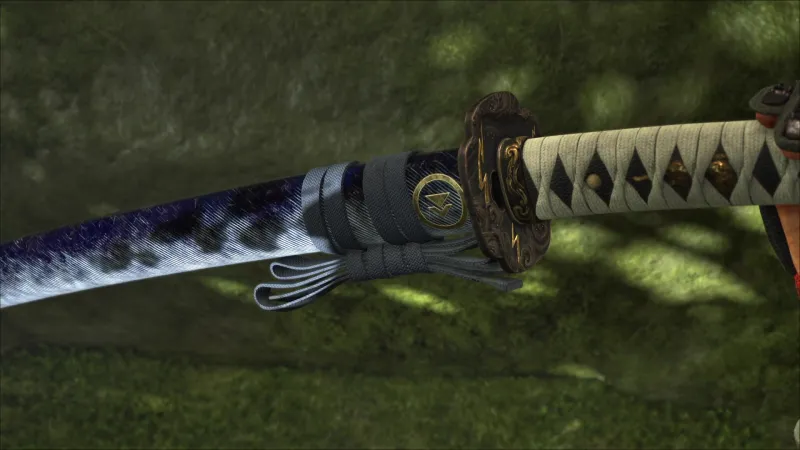
There is a very cool and unexpected extended sequence about Jin Sakai that explains what happened to him after the events of Ghost of Tsushima. When was sequence considered for the game?
Jason Connell: I don’t remember exactly when it came up. I would say it was earlier than it was late. I think once we knew that we were going to tell Atsu’s story – she’s this legend, this Ghost of Yōtei, it was really a lot of our efforts were going to be propping up this really deep, intimate story of revenge. Once we knew that and it was really in the can and we were really working hard at making that come to life, I think we all were like, “Well, okay, there is clearly a really cool opportunity here with Jin Sakai.” And I think the most common idea that got thrown around the studio was playing into our own storytelling of mythics. The last game we had these mythic legends, these stories of awesome warriors that are loosely sometimes crafted off of real people, sometimes they were completely fabricated, and, “Ah, well, we can make our own. The Ghost of Tsushima. We can celebrate him in our own game.” And it was kind of fun.
I think on our team we love Jin and we love that game. So, it was the people that got to work on that that were probably just delighted they got to spend that time wrapping up his story and giving him a beautiful sendoff. And we got to deliver some amazing art and music to sort of bring that to life. I think it was fun. I’m really happy we were able to make that for fans, but also for people that didn’t play Tsushima. They get a little nugget of what that’s like. Maybe they’ll go play it, the people that didn’t play it. And for the people that did, hopefully they see that as the love that we have for that character
When people like me asked about fan theories of Jin being the spirit of the wolf ahead of release, was it hard not say, “Actually, he’s more of a fox.”
Jason Connell: It is hard because you get ideas all the time. And sometimes they’re exactly what you’re doing and you can’t say it. And sometimes it’s just close enough that you just smile really big. People are really clever.
Tsushima had a choice of endings. Were multiple endings ever considered for Yōtei?
Ian Miles: I would say we considered everything for that ending. And we definitely looked to what worked and what we wanted to carry forward from Ghost [of Tsushima]. But ultimately, just really looking at the classic ending of where we wanted Atsu’s story to go, I felt like the true ending and the culmination of everything because of what she’s been through on this journey of revenge and healing. We considered that she had to get to the end of this journey, and, we saw versions of the story that were a little happier. They were less happier ones that were more and more tragic. But, it was important to us to really talk about and show Atsu having to sacrifice some things and having to lose some things out of her control as much as she might try to.
So much of the game is about freedom and giving the player agency over their actions, and we really embraced that everywhere we could in the game. But we wanted to, at the very end, show that ultimately the choices along the way led to this place where with Atsu, as much as she would love to carry her brother forward and help him, she can’t. And really, she’s in a way brought back to where she was at the very beginning, where she thought she had lost her brother.
We wanted to show her where she’d really had a moment to connect with him and have that emotional connection rebuild something that she thought she’d lost and was never going to find. And then also just putting Atsu in that position where she now is with her niece, who she never knew existed until recently. And having to carry that forward and having to also think about Jubei’s “fight for the living” mantra, how she’s going to live up to her brother’s standards and carry his spirit with her even as she is not with him anymore.
So even though, I love Jubei, I love what Noshir [Dalal] did with the character, and in my heart of hearts, I want to see him alive at the end, but, ultimately, the story didn’t lead us there, and we didn’t want to create choice just for choice’s sake in that moment of all moments.
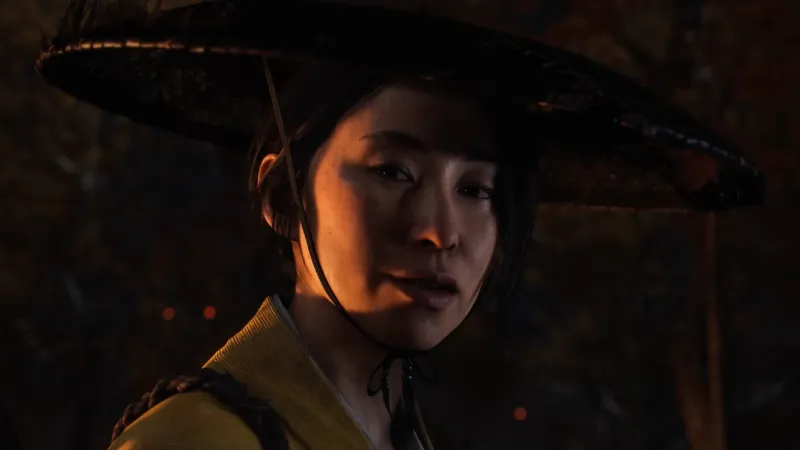
Do you consider Atsu’s story complete?
Ian Miles: For me? I see it as a chapter is done, but she has so much more in front of her. She’s just suddenly learning to live again without her brother with her niece and as a surrogate mother figure. Revenge is now fully behind her, but she’s not fully healed. She’s healed a lot, and she’s learned to see a future beyond revenge.
But what that future is? Is it just going to be smooth sailing? I think absolutely not. And that’s one of the interesting things about Atsu’s story that also makes it, really relatable.
By the way, that was my not-subtle-at-all way to ask if there will be single-player story DLC. Would you like to do something like that?
Jason Connell: I think for us, we are at the spot in the project where we just get to put it out there and see what’s resonating with people and what people love and what people feel like they wish they maybe knew more about Atsu.
And I think for us, this is like the most important part of the project, in terms of making decisions like these, because same thing with Tsushima. You can listen, you can be like, “Oh, okay. People seem to want to know a little bit more about that relationship or what happened to the dad.” How do you further that character?
And you get this rare opportunity to actually listen to millions of people about what resonated within a story versus maybe what didn’t or what are the holes. And I think that’s the mode that you want to be in. And that’s sort of the gift. Certainly we love Atsu, and we think it’s a great character. And just like with Jin, if there’s rooms to improve it or to bring some new elements to life or clarity for the narrative’s sake and it falls within what is best for Sucker Punch, then we’ll certainly take a hard look at that for sure.
How do you feel about the reception? Is it a relief to have the game out in the world?
Jason Connell: We just had our launch party, so I think we’re all feeling really great. We got to see all our colleagues and to celebrate making something together. Games are super hard to make. There’s a lot of them that don’t even ever get to come out, let alone one that is an improvement in so many ways. And people are loving the new choices and sure, you’re going to get criticism no matter what you do. If it’s worth doing, somebody’s probably not going to like something.
For me, I think criticism is a gift. There’s some people that are going to love what you make and some people are maybe not going to like it. So, all you can do, especially if you’re really proud, which I’m immensely proud of what Ian’s team has done, the art team has done the music? Oh my gosh, I’m so proud of everyone on the team.
There’s criticism nobody ever wants to hear, “Oh, I didn’t like X or I didn’t like Y.” It’s not fun to hear that stuff, but it makes you better creators, right? Because you think about the perspective of that player or another player. Maybe it’s just okay this person didn’t like this because this was maybe for this kind of player.
So for me, it all evens out. It’s a lot of just happiness. Having made a game that is a better game than our last in a lot of ways that is really resonating with some people. So for me, a lot of gratitude for the team and really looking forward to what we go bang on next.
How about you, Ian? How do you feel about Yōtei being out in the world?
Ian Miles: Very similarly, to Jason. Extreme relief, just because it was such a journey and it was such a fun one. But, I’m so glad it is out there. For the past month, I just wanted to fast forward to when players get to sink their teeth in and really have fun with it.
And then pride in the team because it was such a huge effort across so many teams and so many things come on late in the last minute to really sync up and click to bring that magic to life, which is just also really exciting to myself because I’m seeing it built along the way. And I’m also just so glad that people responded so positively to a new character.
I also love, love Jin. But it was really exciting to be able to bring a new character to life and think about what her journey as a Ghost, might be. And then also seeing people’s reaction to the more, free and open world and how that experience stretched our muscles some. And we tried something new and I think it worked really well.
But, yeah, I like seeing how we took some risks and how they’re, paying off and, all the feedback, as well, like Jason mentioned. The pros and the cons. I like to see what everyone’s thinking. Just to learn from.
Jason Connell: You think about five years of making the game, like we’ve had people on the team, we make decisions sometimes and people are like, “I really hate this,” or, “I really love this.” I think on a healthy team, you’re probably used to some people disliking things and liking things. But this is another level, right? Because these are the fans, the people that spend money on it. So you listen with a different type of ear. It’s a fun time. And we’re really grateful to actually be able to be here.
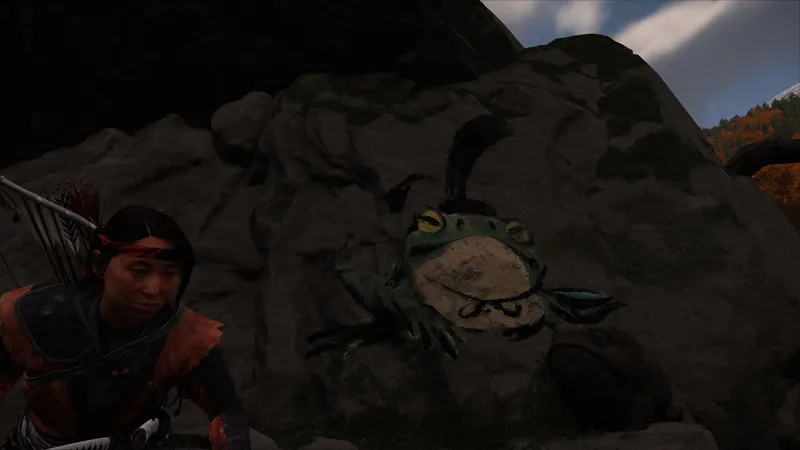
There are murals throughout the game referencing previous Sucker Punch games. How did you decided what kinds of murals to place throughout the world?
Jason Connell: This is probably the least exciting answer ever. I would love to say, “Yeah, there’s a process and a committee and we concept this stuff out…”
Nope.
There’s a person on the team who is very passionate about this. His name’s Harold and I think there are a couple other people, too, but they’re like, “Hey, this is a cool IP that we own, right? We don’t have to ask anyone. This is our game. Let’s go make a cool mural.” And they just go find cool places in the world and place them. I’ll be honest, I didn’t know about three or four of them. I just found them one day. I was saying like, “What? This is awesome.”
Sword kits are the same thing. There’s a couple sword kits. There’s one infamous strike, I think, is what it’s called for Infamous. It’s got lightning bolts all over it. To me, I think these are the true joy of a cool, creative, collaboration inside the studio where they just got cool ideas and they know that we’re within our wheelhouse and abilities, and we don’t need to get sign off from any other studios for this type of stuff. It’s just ours. And I love that the team has fun with it. I love that. I also love that I don’t know about it. I think that’s my favorite part. It just happens.
The one that surprised me was the Sir Raleigh the bullfrog from Sly Cooper mural. It’s one thing to have a mural about the entirety of Infamous 2, for example, but to have a mural focusing in one villain from the game really made me laugh.
Jason Connell: [Harold] actually gave me the list because I don’t even know where they all are.
What’s the one that was the most surprising to you that you didn’t expect?
Jason Connell: Probably that one’s pretty high. But I love that somebody put Rocket in there. Rocket Robot [from the N64 game, Rocket: Robot on Wheels].
I don’t know where that one is. I haven’t found it, but I’ve seen the picture. I’ve seen what it looks like. I just love that that Sucker Punch’s first [game is in there]. I wasn’t here. But I love that Sucker Punch’s first game is honored.
Were romantic partners ever considered for Atsu?
Ian Miles: It was to some degree, but as we thought more about Atsu and the relationships she’s building, essentially we always would go back to what has Atsu been through and what sort of relationship would she be willing to get into?
So, as much as there are certain members of our team, myself included, who would love to have the dating simulator version with certain characters where you can pair people up… Atsu? To be true to her and what she’s been through? I don’t think she would open herself up to certain people too early.
Maybe again, that would be for the next chapter, post-revenge. But right now, as she’s going through this hunt for the Yōtei Six, and she’s been through so much. She’s been betrayed, she’s been lied to, and physically wounded? She’s really only now opening herself up and learning to let those guards down and trust people a little bit, which, I think is the first step to that.
Atsu has at least one reference to some romantic dalliances. I think she’s had some physical relationships, in the past, for sure. But in terms of true romance or pursuing that in depth, because Atsu and where she was in her headspace and her journey, in this story, we didn’t go there now.
You can read Game Informer’s Ghost of Yōtei review by following the link. You can also read about how the game connects to Tsushima here, and read our previous interview with co-directors Jason Connell and Nate Fox here.
